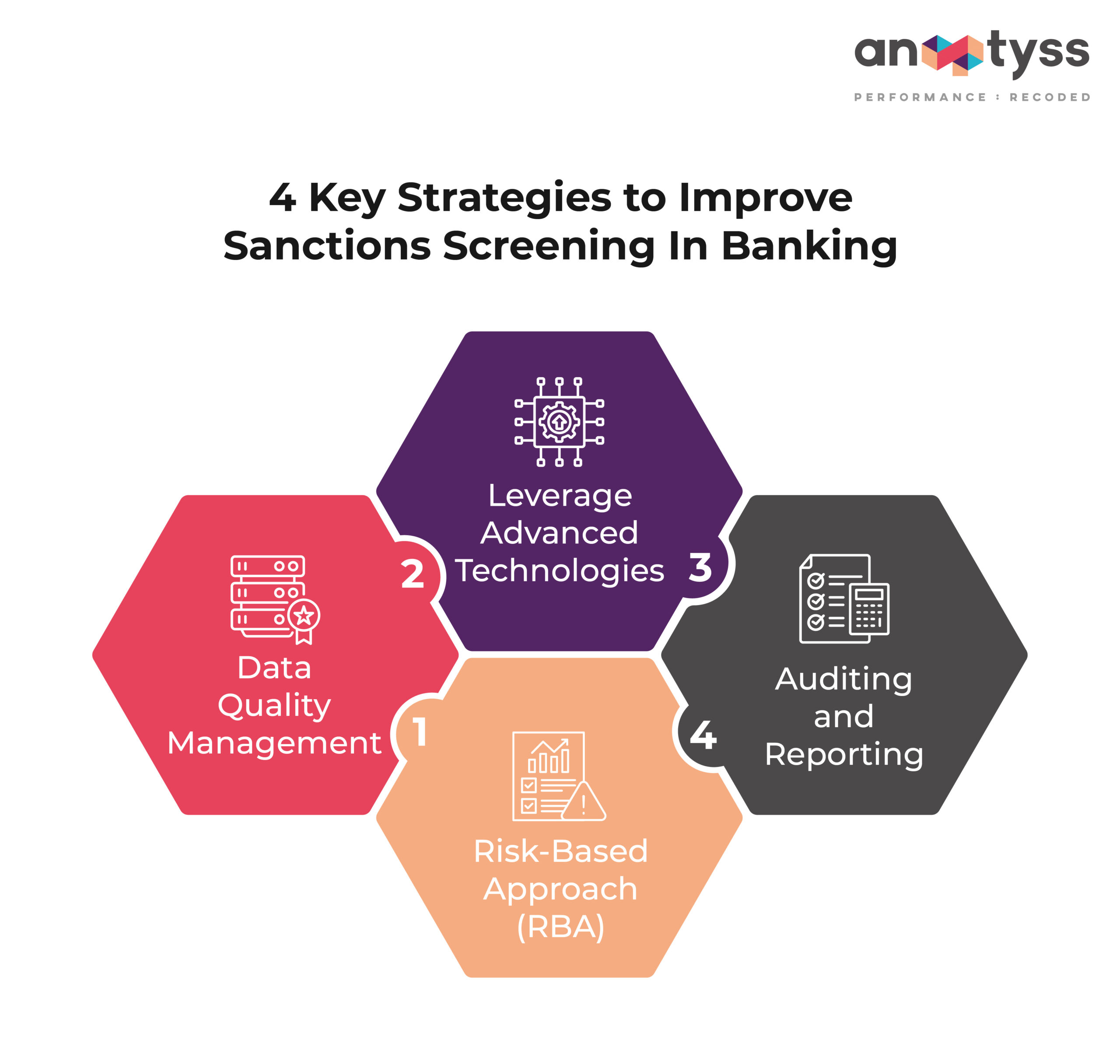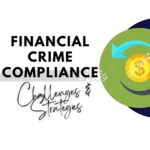Sanctions screening is crucial for banks to combat financial crimes, but it comes with challenges like evolving regulations, false positives, cross-border compliance, and outdated data. This blog explores these challenges and offers best practices for improvement, such as leveraging advanced technologies, ensuring data quality, adopting a risk-based approach, and conducting regular audits.
Sanctions screening plays a pivotal role for banks in the fight against financial crimes. It acts as a frontline defense against potential violations and helps financial institutions maintain integrity.
While the importance of sanctions screening is undeniable, banks face several challenges in navigating this complex landscape.
In this blog, we will discuss the intricacies of sanction screening in the banking industry and provide best practices to improve the sanction screening process in banking.
What is Sanctions Screening?
Sanctions screening in banking is an Anti-Money Laundering (AML) control process through which banks or financial institutions scrutinize customer data and transactions against lists of sanctioned individuals, organizations, and countries. These lists are maintained by government regulatory bodies or international organizations, such as the Office of Foreign Assets Control (OFAC).
This meticulous examination aims to prevent activities, such as money laundering, terrorism financing, and trade with embargoed nations.
It also ensures that banks do not inadvertently facilitate sanctions violations, which could result in severe penalties, including fines and imprisonment.
Failure to comply can have dire consequences.
According to Dow Jones, violation of OFAC sanctions can lead to monetary fines ranging from a few thousand dollars to millions and/or prison time of up to 30 years.
4 Key Challenges in Sanctions Screening for Banks
A robust sanctions screening program is not just a compliance checkbox, it is an integral part of a bank’s broader financial crime risk management strategy.

Banks and financial institutions must comply with the sanctions guidelines by the Office of Foreign Assets Control (OFAC) in the United States. This also includes international sanctions related to cross-border compliance.
Below are the 4 key challenges to ensuring effective sanctions screening.
1. Evolving Regulatory Landscape
The evolving regulatory landscape in sanction screening poses challenges due to the following:
- Frequent updates in sanction lists.
- Complex and varied regulations.
- Rapid geopolitical changes.
- Varying enforcement practices.
2. False Positives
Dealing with false positives presents another significant challenge in sanction screening. The demand for faster payments puts significant pressure on banks and financial institutions. As a result, they need to screen transactions rapidly without compromising accuracy.
However, no matter the type of screening you implement, false positives may arise as there can be thousands of data points and names to match that can further produce hundreds of results. These results require further manual reviews that can drain valuable resources and lead to operational delays and potentially frustrating customers.
3. Global Operations (Cross Border Compliance)
Regulatory documents and communications are often unclear due to cultural, language, and ethical differences, which leaves room for ambiguity. The transliteration process, converting names between writing systems, is also pivotal in screening diverse international entities. Inaccurate transliteration can lead to misunderstanding, misalignment between the financial institutions and the regulatory authorities in different jurisdictions, and critical compliance gaps,
4. Screening with Outdated Data & Tools
Outdated sanctions list data and missing information, such as SWIFT business identifier codes, pose significant challenges. Effective sanctions screening relies on reliable data and advanced fuzzy matching techniques to catch alternative spellings and variations.
4 Best Practices to Improve Sanctions Screening in Banking
Overcoming these challenges necessitates a strategic and proactive approach. Here are four key areas where banks can focus on improving their sanctions screening process.
1. Leverage Advanced Technologies
Legacy solutions may struggle to keep pace with the rising complexity of global sanctions. Therefore, banks and financial institutions need to invest in newer technologies such as artificial intelligence (AI) and machine learning (ML) to automate the screening process, improve accuracy, and reduce false positives.
Financial institutions can use real-time data processing and monitoring to:
- Actively adapt changes in sanction lists.
- Promptly identify and address suspicious activities.
2. Data Quality Management
Poor data quality underlines the risk-based approach that leads to inefficiencies and compliance gaps. Therefore, it is important to regularly assess the quality of sanctions data and ensure it is up-to-date, accurate, and sourced from reliable internal and external (third-party) channels. To manage and improve data, financial institutions can focus on the following:
- Understand the data you collect, store, and process.
- Review and audit the collected data for accuracy, completeness, quality, consistency, relevance, and timeliness.
- Eliminate data silos.
- Establish effective data governance practices.
3. Risk-Based Approach (RBA)
Risk-based and tailored screening solutions are crucial to prevent delays in low-risk payments and ensure compliance. RBA enables financial institutions to assess and understand the risks to which they are exposed and take the necessary measures to mitigate them.
Financial institutions can refer to the Financial Action Task Force’s (FATF) guidance for risk-based approach (RBA).
4. Auditing and Reporting
Conduct regular audits to assess the effectiveness of the sanction screening processes and controls. It helps:
- Identify weaknesses and gaps in the sanction screening process.
- Highlight issues with data quality.
- Guide staff training based on the audit findings.
- Adoption of new-age digital technologies to enhance screening efficiency and capabilities.
- Maintain transparent and detailed records for regulatory reporting and compliance verification.
Conclusion
Improving sanction screening in banking is a dynamic and continuous process. It requires a combination of technology, training, data management, customization, collaboration, regulatory alignment, and rigorous auditing.
By adopting these strategies, banks can enhance their sanction screening processes, ensuring compliance, and mitigating financial crime risks effectively.
An enterprise-grade solution, such as ALFA offers a viable solution to improve the sanctions watchlist screening process with real-time monitoring. It also enables financial institutions to effectively mitigate financial crime risks, including transaction laundering, and comply with AML regulations.
Want to learn more or need specific guidance for effective Sanctions Screening?
Write to us at info@anaptyss.com.



















